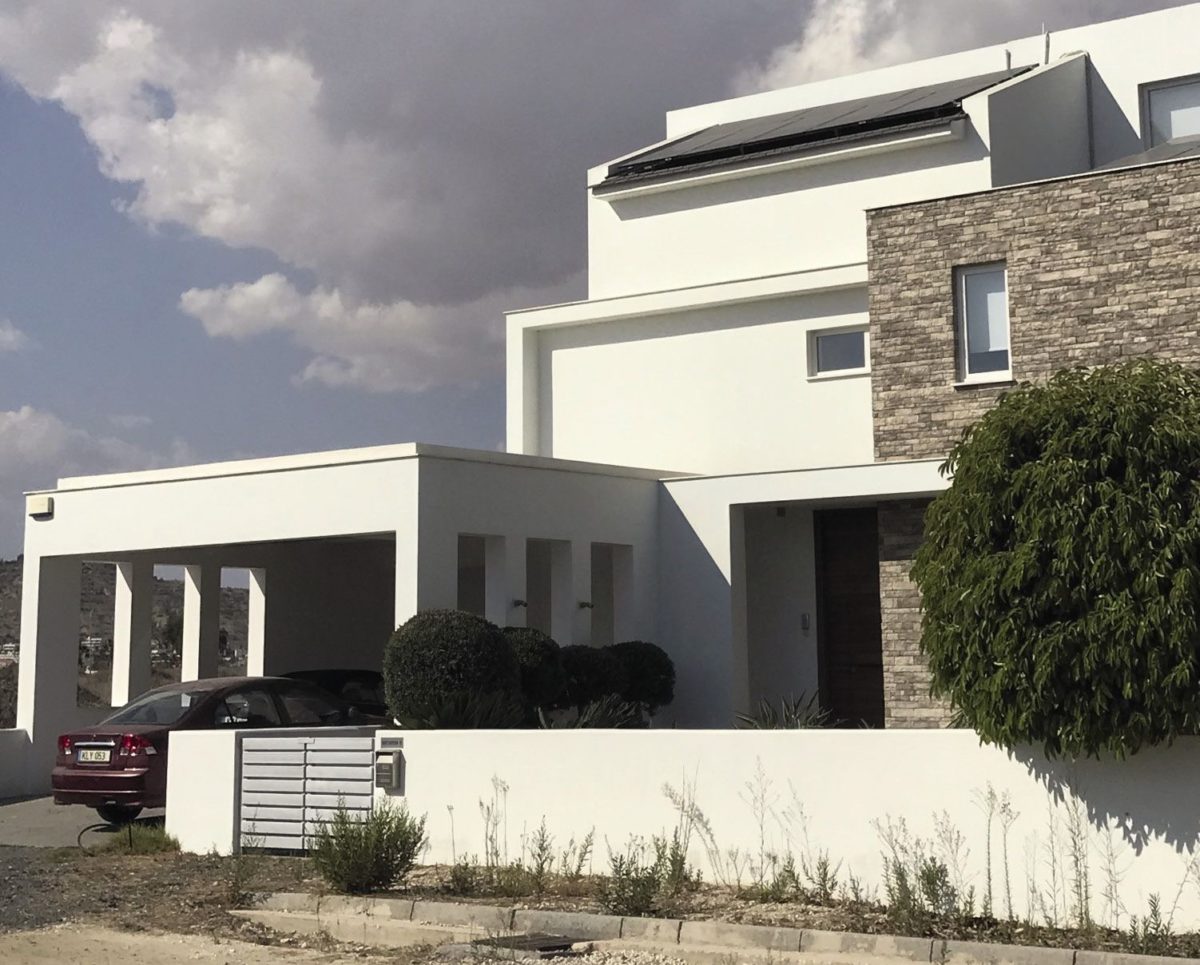From pv magazine 11/2021
The European Union’s Energy Performance of Buildings Directive (EPBD) 210/31/EU required all new buildings to be nearly zero-energy buildings (NZEBs) by the end of 2020. Furthermore, it also required all new public buildings to be nearly zero-energy by 2018.
EU directives comprise the bloc’s legal toolbox and therefore must be implemented by member states. They do not comprise a voluntary, horizontal policy transfer tool among member-states. Policy learning and transfer might indeed occur via a plethora of initiatives and schemes, however, all member-states need to transpose the directive into their national laws.
Urban Solar
 Buildings are key to our daily lives and significantly impact our health and wellbeing. The majority also have substantial carbon footprints, employing heavy use of fossil fuels across their lifetimes, from their construction, use, and demolition phases. In addition to the predicted billions of square meters that will be added in the next decade, most of those buildings standing today will still be around in 2050. Thus, retrofitting existing structures is considered a key sustainability target. In Q4 2021, pv magazine’s UP Initiative focuses on the role solar and energy storage can play in greening the world’s urban spaces. Read our coverage
Buildings are key to our daily lives and significantly impact our health and wellbeing. The majority also have substantial carbon footprints, employing heavy use of fossil fuels across their lifetimes, from their construction, use, and demolition phases. In addition to the predicted billions of square meters that will be added in the next decade, most of those buildings standing today will still be around in 2050. Thus, retrofitting existing structures is considered a key sustainability target. In Q4 2021, pv magazine’s UP Initiative focuses on the role solar and energy storage can play in greening the world’s urban spaces. Read our coverageThis is why the European Commission asked all member states to draft and submit plans describing how they intend to increase the number of NZEBs in their countries in order to comply with the directive. The commission has also been tracking the performance of its member states towards the new goals.
Member state plans, and their revisions, as well as routes for the adoption of NZEBs, have been submitted to the commission through 2021. To help national administrations learn from each other, in 2016 the commission also published guidelines for the promotion of NZEBs, while a number of progress reports and studies funded by the EU have also provided transparent, up-to-date information.
NZEB uptake
One of the most complete studies regarding the uptake of NZEBs in the European bloc was prepared for the commission in 2019. It examined the renovation activities that took place in each member state from 2012 to 2016.
The EC study considered all levels of renovations relating to non-renewable primary energy savings achieved in a specific calendar year. Both energy and non-energy renovations were considered, and solar PV comprised part of the energy renovations. The study came up with the following four broad levels of renovation: below the threshold for less than 3% savings, light for energy savings up to 30%, medium for savings up to 60%, and deep renovations concerning larger than 60% energy savings.
It thus found that “step-by-step renovations with little primary energy savings per step dominate the market … This typically means that only a few measures are implemented. The speed at which the building stock improves its energy performance can be expressed as annual reduction of the total building stock’s primary energy consumption. This weighted energy renovation rate is calculated to be about 1%.” The study added that should this trajectory persist, “the building sector will clearly and significantly fail to deliver its share of the overall need for primary energy reduction and consequently a reduction in greenhouse gas emissions.” The study additionally emphasized the need for a significant acceleration of NZEB uptake.
Triggers and barriers
In its study, the EC also looked at the triggers and barriers, either boosting or halting energy renovations respectively. The results are enlightening for the solar PV industry, given such renovations include solar systems.
It is striking that the most widespread triggers for renovations turned out to be necessary maintenance, the replacement of defective components, and budget becoming available to carry out the renovations. “The most relevant aspects of energy renovation for consumers are not the energy savings, but the cost savings and making their home more comfortable and healthier,” aiming to tackle energy poverty and improve the quality of a dwelling.
This is a lesson that government administrations seem to take into account when designing energy efficiency schemes. Greece, for example, launched a new program last year called ‘I Save At Home’ (‘Eksikonomo Kat’Oikon’) targeting both landlords and tenants of residential buildings. Among other technologies, the scheme concerns solar, battery storage, and electric vehicle charging systems, while according to the level of the renovation and the recipient’s income the scheme could subsidize up to 75% of the upgrade costs.
Alexandra Sdoukou, secretary general for energy and mineral resources at Greece’s ministry of the environment and energy (Ypen) – and a force behind the design of the new scheme – told pv magazine that tackling energy poverty was the main driver behind Greece’s new policy. At the end of the day, she believes that, should households adopt most systems promoted via our new scheme, their dwellings would be very close to becoming NZEBs.
Speaking about the challenges in the widespread adoption of NZEBs in Greece, Sdoukou argued that a major barrier concerning the upgrade of old dwellings towards becoming NZEBs is the high cost of the required renovations. However, she said that her team constantly communicates the message that renovations can have a quick payback period and a building’s upgrade will improve the residents’ quality of life.
Concerning new constructions, a barrier for the adoption of NZEBs is the prevalence of old-fashioned ideas, however, these are now gradually diminishing as people experience the manifestations of climate change and new technologies become visible in the market, added Sdoukou. The change in ideas can be seen among architects and designers, she said.
Key role
The change is crucial because according to the study published by the EU Commission, the influence of intermediaries such as architects and installers is largely underestimated. “These intermediaries … are the persons [that] consumers listen to when deciding about the extent or depth of energy efficiency measures,” said the authors of the study.
However, a common challenge is that often energy efficiency measures are too complicated and even many architects find it hard to select the most suitable measures.
This is why the NZEB policy and all energy efficiency-related policies must be communicated to the key stakeholders in a timely manner, argued Andreas Procopiou, chief product officer of battery manufacturer Watts Battery. And in this case, those are actors engaged in property development, such as architects, civil engineers, and property developers.
Lost in translation
The need for the clear communication of policies is becoming all the more important, given that the market for small PV systems is no longer supported by stable feed-in tariffs, but rather through self-consumption and net-metering schemes. Such financial drivers are more complex and best achieved through energy management within the home and concepts such as the smart home.
A paradox hampering the adoption of NZEBs and the business of smart energy companies is that while often national policies subsidize the purchase of smart energy devices, like behind-the-meter energy storage, the same countries do not have a regulatory framework in place to define the role of such devices in the electricity market. This is the case in Greece and Cyprus for instance, where governments say energy storage policy frameworks are under way.
On top of this, a report published in June this year by the Buildings Performance Institute Europe (BPIE), a think tank with offices in Brussels and Berlin, says the quality and clarity of NZEB-related information published by member states differs significantly across the bloc. Within the EU, some administrations publish lengthy and complicated documents from which it is hard to extract headline results, while others are not explicit or clear on implementation dates or other key provisions. The same report argues that renewable energy requirements within NZEB standards are not specified across all member-states.
Finding their way
Policy complexity and miscommunication of the measures across different states provide additional hurdles to companies that are looking to enter certain markets. So, an emerging question is how they can push forward, find their way to apply their ideas, and sell their products in different energy markets.
Procopiou provided clues. Watts Battery, which a few months ago moved its headquarters from Cyprus to California, serves the EU, the United States, Russia, Asia, and Africa. The company also targets any market with an interest in energy storage systems. However, where in Russia and Africa it focuses on backup power solutions, in the EU market it provides opportunities around end-users who aim to gain energy self-sufficiency and provide services to the grid, such as via virtual power plants (VPPs).
Procopiou said that most often, “market growth is defined by government incentives or law-enforced policies.” While the company takes into account the EU’s NZEB policies, most people who are not in the space of property development and energy integration are not aware of the NZEB information, and therefore specifically in the EU, Watts Battery will rather approach customers offering other solutions. Such solutions concern the best use of a customer’s self-generated energy or VPP applications.
“Energy storage is the key to accelerate the transition to NZEBs,” Procopiou told pv magazine. “Of course, many systems can help to increase a dwelling’s energy efficiency, but still a lot of energy is needed from the grid during the day. Fitting PV panels can help reduce the need to use energy from the grid, but only a part of the self-generated energy is locally consumed and the rest is fed back to the grid.
“At times when the PV systems do not generate power, this is supplied by the grid, often generated from fossil fuels,” Procopiou added. “If we balance those two power flows, we can call the building ‘net-zero’. The case becomes stronger in the future because if the NZEB policies materialize and most or all of the buildings self-generate solar power, then the excess generating power during daylight becomes more of a pressing issue. So, I would argue, that unless we can store the excess clean and carbon-free solar power and use it later in the day, the efforts of creating NZEBs will not be fully achieved.”
Meanwhile, the EU Commission study says the building sector is the largest single energy consumer in Europe and estimates that today’s buildings will make up at least 75% of the 2050 building stock. Therefore, both energy renovation for existing stock and innovation for new buildings are needed to shift to a low carbon energy system.
This content is protected by copyright and may not be reused. If you want to cooperate with us and would like to reuse some of our content, please contact: editors@pv-magazine.com.



By submitting this form you agree to pv magazine using your data for the purposes of publishing your comment.
Your personal data will only be disclosed or otherwise transmitted to third parties for the purposes of spam filtering or if this is necessary for technical maintenance of the website. Any other transfer to third parties will not take place unless this is justified on the basis of applicable data protection regulations or if pv magazine is legally obliged to do so.
You may revoke this consent at any time with effect for the future, in which case your personal data will be deleted immediately. Otherwise, your data will be deleted if pv magazine has processed your request or the purpose of data storage is fulfilled.
Further information on data privacy can be found in our Data Protection Policy.